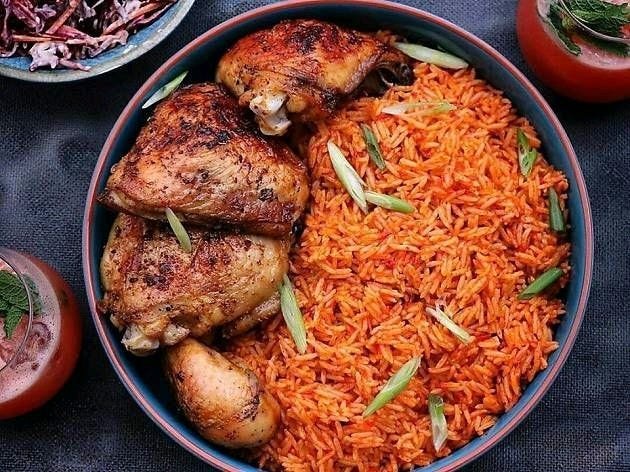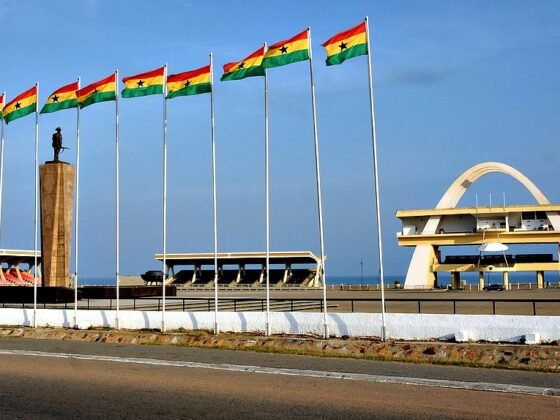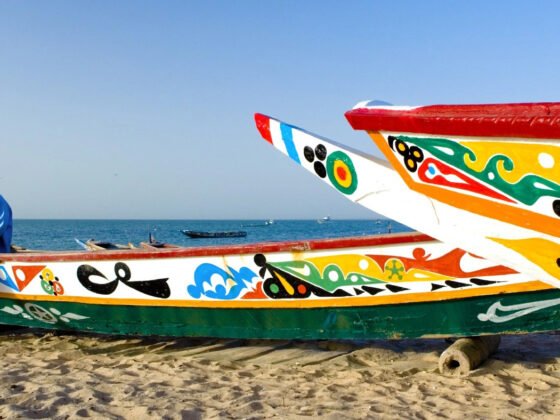The distribution of food crops is a feature of traditional Ghanaian cuisine. Most ethnic groups consume exquisite recipes made from tropical crops including corn, beans, millet, plantains, and cassava. The foods described below will give you an idea of the diversity of Ghanaian cuisine.
1.Tuo Zaafi.
Grain, herbs, and meat are essential elements in northern Ghanaian cuisine because they are the region’s principal agricultural products. Tuo Zaafi is made by boiling maize dough and adding a small amount of cassava. It resembles banku, but is softer and less sticky. The unusual and healthful herbs used to produce the accompanying soup, such as dawadawa and ayoyo leaves, distinguish Tuo Zaafi and contribute to its national popularity.

2. Fufu and goat light soup.
Fufu and goat light soup, a distinctive Akan dish, is a dinner that is sure to be popular in Ghana’s eastern and Ashanti regions. In Ghana, fufu is made by pounding boiling cassava and plantains into a soft, sticky paste that is then combined with tasty, hot tomato soup. Fufu is a staple food in West Africa. Fufu is also consumed in Northern Ghana, albeit it is made using yam. Despite slight changes to the fundamental recipe, this weekend delicacy is popular across the country.
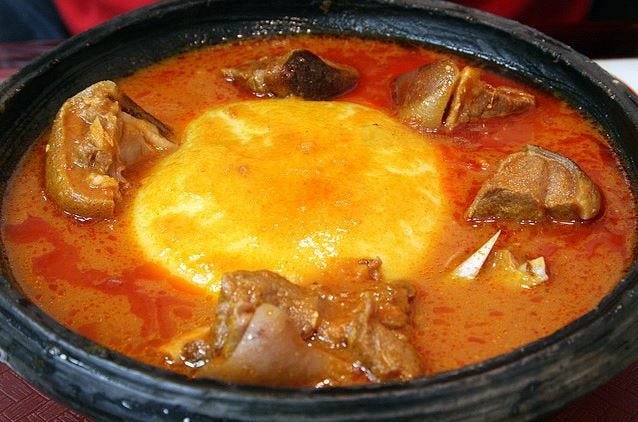
3. Banku
Kenkey and Banku are similar. The distinction is that this meal is made by combining maize dough with cassava dough. Furthermore, it is not encased in a cornhusk. Tilapia seasoned in spices is frequently the type of fish being cooked on the streets. It goes well with Banku, which is eaten with chopped tomatoes, onions, and extremely hot peppers also used as a garnish. One of the staple foods of the residents of coastal Ghana is Banku.

4. Waakye
Waakye is another dish that exemplifies Ghanaians’ inventive usage of rice. The recipe, which combines beans and rice, was originally a Northern dish, but it can now be found anywhere on Accra’s streets. Waakye will introduce you to a range of Ghanaian tastes and flavors because it is generally served with several sides such as spaghetti, avocado, fried plantains, and Garri (grated cassava).
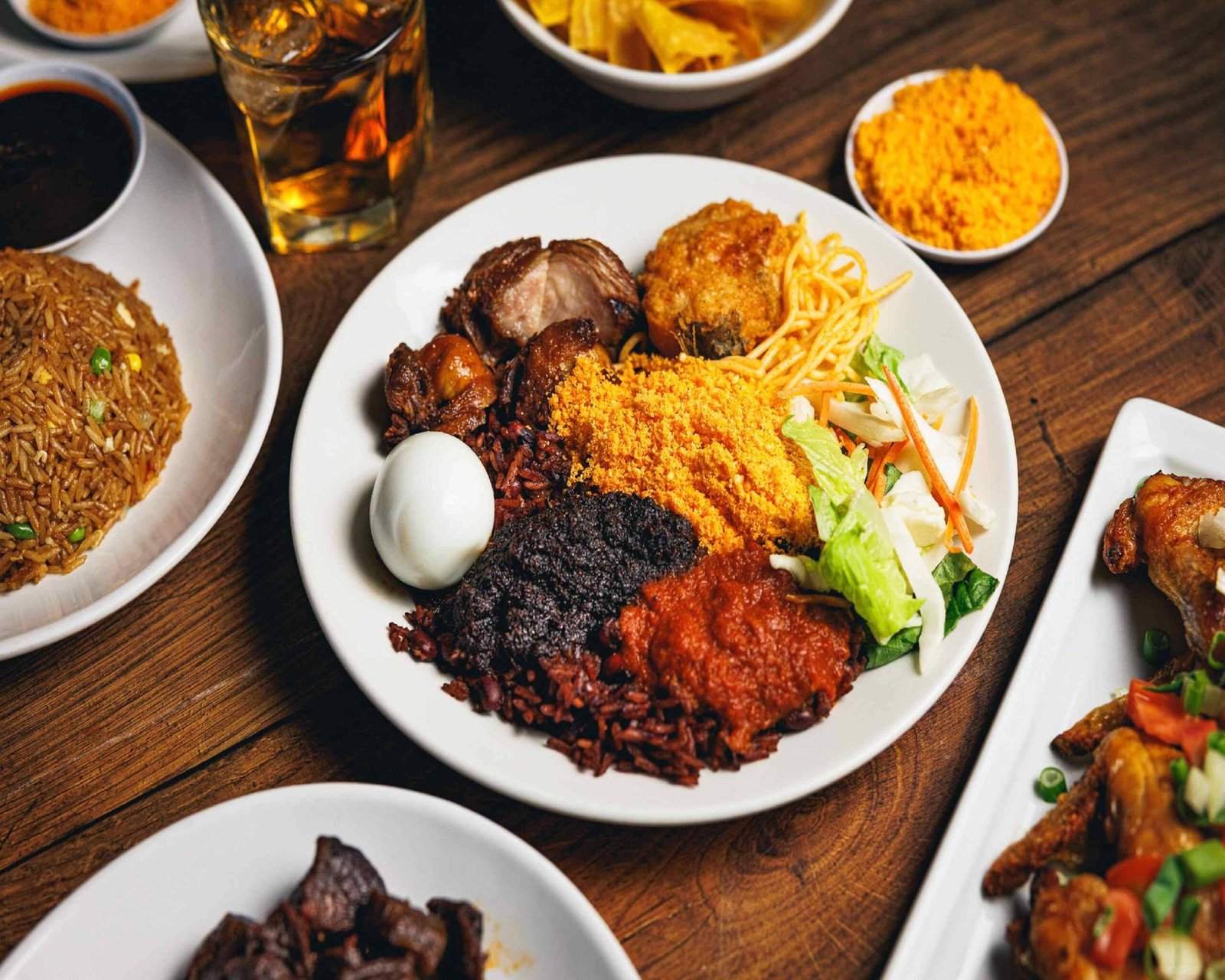
5.Gob3
Gob3 is a Ghanaian food made of Gari and beans, and therefore the name gob3 is a combination on Gari and beans. This Ghanaian food which is considered very nutritious is trending on some social media platforms.
Gob3 is quickly becoming a popular choice among many people; it is difficult to say if this is due to MP pronouncements or the economy, as gob3 is thought to be more economical and filling than waakye or kenkey.
People are reporting on social media that the queues for purchasing gob3 are growing.
Some Ghanaian celebrities have also used social media to express their appreciation for Gob3.
It is evident that gob3 is rapidly gaining popularity, so I am curious: is gob3 part of your meal plan for today?

6.Ampesi aka Plantain and Kotombire Stew
A variety of leaf vegetables, as well as local herbs and spices, are common ingredients in indigenous Ghanaian cuisine. The extremely nutritious Kontomire stew is made with salted fish, boiled eggs, and soft cocoyam leaves, and it goes well with boiling yams, plantains, and avocado.

7.Jollof
This rice dish is Senegalese in origin and is often made with a protein of choice such as meat or fish, part of the main ingredients for this delectable meal is tomato sauce. This dish is often accompanied by your favorite salad and delicious baked or fried plantains You may find online arguments abound about which West-African nation provides the best Jollof. This is a popular meal served by street vendors and sometimes prepared over a wood fire or coal adding a smokey salivating experience for the taste buds. Since this is one of the most popular dishes in Ghana you will find it at a reasonable cost at most restaurants on the destination.
